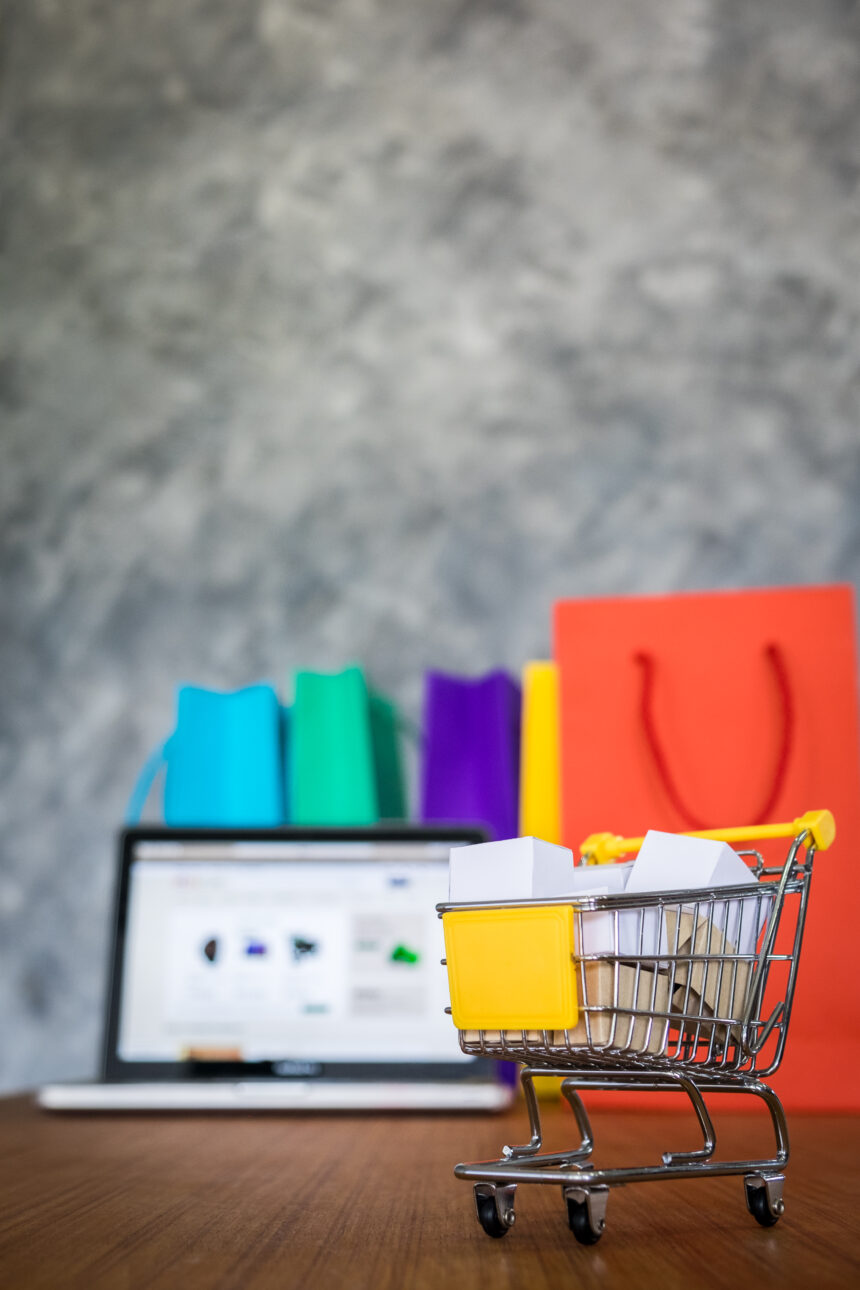Retail isn’t just visual anymore, it’s aromatic. Smart brands are using olfactory marketing to stir emotion, spark memory, and nudge baskets from “maybe” to “mine.”
🧠 Why smell is retail’s secret conversion engine
Sight gets the splashy displays and sound gets the playlist, but olfactory marketing plugs straight into the brain’s emotion-and-memory network. Because smell has a fast lane to the mind’s emotional centers, a subtle fragrance can quietly change how a store feels — and how long we stay. For foundational context, the science of smell is covered clearly in this overview of olfaction, while the brain’s memory/emotion circuitry is mapped in the limbic system.
When a space smells like warm cedar, ocean air, or just-baked cookies, we don’t just perceive cleanliness or quality — we recall moments and assign feelings to products. That’s why a light citrus in a tech aisle can whisper “new, clean, precise,” while vanilla near a checkout softens the last-mile wait and encourages impulse picks.
“I swear, the smell of fresh-baked cookies gets me every time. I can’t resist buying at least a dozen! 🍪” — a Redditor
“I walked in for one thing and left with a basket. The store’s scent had me floating, lol.” — a TikTok user
“Not overpowering — just enough to feel cozy and… spendy.” — an X user
If you’re mapping modern in-store tactics to bigger digital shifts, it mirrors experience-led commerce. For how retailers fuse human cues with tech, see BigTrending’s analysis of mobile marketing is the future of e-commerce — a useful lens for pairing sensory design with on-phone funnels.
🌟 Brand playbook: who’s doing scent right (and why)
Abercrombie & Fitch built a vibe around a signature scent — a classic case of olfactory marketing. For years, shoppers could find the store by its trail in the mall. That consistency turns fragrance into brand memory, even when visuals change every season.
Lush leans into natural, ingredient-forward aromas. Instead of hiding scent, the brand makes it the marquee olfactory marketing that ensures the store smells like the product and the promise (handmade, fresh, botanical) is literally in the air.
Boutique hotels taught retail a crucial trick: fragrance zoning. A spa-calm lobby, energizing gym, relaxed corridors — each zone signals behavior. Stores now copy this olfactory marketing tactic to guide traffic flow, mark departments, and set purchase moods without a single printed sign.
Pop-ups and showrooms use scent to compress brand identity into minutes. A note of leather in an athleisure launch or smoky sandalwood in a design drop creates instant atmosphere — olfactory marketing in fast-forward, even if the space is temporary.
🔬 The science made simple: how scent shapes behavior
- Emotion first, logic later. Smell takes a fast lane to emotional processing, which is why first impressions land before we rationalize.
- Memory anchors. Repeat the same gentle scent and you bind brand actions to a feeling — launch days, loyalty events, seasonal floorsets.
- Context cues. Citrus/mint read “clean/bright,” woods read “grounded/warm,” bakery notes read “comforting/indulgent.” Use the right note to frame product perception.
📊 The business case: dwell time, conversion, and return trips
A consistent scent strategy correlates with:
- Longer dwell times. People linger where air quality feels intentional and pleasant.
- Higher basket adds. Comfort reduces friction; customers explore more categories and price tiers.
- Better memory recall. A signature aroma becomes a brand recall device — shoppers recognize the “feel” and return.
Pair scent with the right soundtrack and lighting, and conversion nudges become multipliers. Add a moment of discovery (e.g., a scented tester bar near a new collection), and shoppers have a story to tell — and buy.
🧰 Building a scent strategy: a practical blueprint
1) Define the brand note set
Start with three fragrance pillars that match your positioning:
- Fresh/clean (citrus, mint): Great for tech, health, and seasonal floorsets.
- Warm/comfort (vanilla, amber): Fitting rooms, checkout, lounge zones.
- Natural/earthy (cedar, vetiver, herbs): Home goods, denim, lifestyle corners.
Document the “why” behind each pillar so merch, VM, and store ops stay aligned.
2) Map zones and intensities
- Threshold (entrance): Light, inviting, not a wall.
- Core product zone: Your primary brand note at low, steady intensity.
- Feature tables: Slightly brighter top note to flag newness.
- Fitting rooms/Service desks: Softer, calming base to reduce stress.
3) Choose hardware you can actually maintain
- HVAC-integrated diffusers for even coverage in large spaces.
- Standalone atomizers for pop-ups and windows.
- Time-and-traffic scheduling so diffusion matches footfall, not just a clock.
4) Write the scent SOP
- Daily check, weekly cartridge audit, monthly deep clean.
- Clear escalation for “too strong” reports.
- Seasonal testing windows with A/B intensity and shopper intercepts.
5) Test, learn, iterate
- Dwell time vs. scent-on/off by zone.
- NPS post-visit with a line on “store atmosphere.”
- SKU adjacencies (does the cozy note lift lounge sets more than denim?).
💸 The price of aroma: line items that surprise first-timers
- Signature development. Crafting a custom accord with a scent house includes briefing, sampling rounds, stability testing, and IP terms.
- Diffusion hardware + cartridges. Costs scale by square footage and traffic volume.
- Rollout and training. The best strategy fails if field teams can’t set levels, troubleshoot, or reorder.
- Compliance and documentation. Labeling, MSDS sheets, and allergen transparency matter — especially across jurisdictions.
🌱 Scent with a conscience: safety, ethics, and sustainability
Shoppers notice authenticity. If you talk “clean” values, your scent program should reflect it:
- Safer profiles. Favor IFRA-compliant formulations and clear disclosure for common allergens.
- Sourcing signals. Botanical notes from sustainably harvested inputs beat vague claims.
- Waste-lite ops. Refillable cartridges, recyclable packaging, and right-sized diffusion cut footprint and cost.
Ethical scent choices build trust — crucial when you’re asking customers to breathe your brand for 20 minutes.
🧪 Field notes: three retail scenarios
1) The denim drop
A flagship swaps its generic “fresh linen” for dry cedar with a hint of bergamot. Result: the floor feels warm, premium, and “lived-in,” which pairs with heritage fits. Dwell time around the raw denim wall climbs, and fitting-room staff report fewer returns on heavier fabrics.
2) The wellness corner
A grocer pilots a mini spa aisle with magnesium soaks and herbal teas. They diffuse mint-eucalyptus in a narrow beam over the gondolas. Shoppers slow down, staff conversations increase, and a bundled “wind-down kit” sells through by week’s end.
3) The holiday checkout
A mid-size chain adds a subtle vanilla-spice near POS (not the entire floor). Queue irritation scores drop, and small-gift attachment ticks up — from lip balms to coffee sachets — without feeling like a carnival.
⚠️ Pitfalls to avoid (so your store doesn’t smell like a headache)
- Overpowering. If shoppers smell you from the parking lot, turn it down. Scent should be noticed, not announced.
- Mismatched notes. A “spa” aroma in a hardcore performance gear aisle creates cognitive dissonance.
- Inconsistency. Switching scents weekly kills the memory link you’re trying to build.
- Ignoring sensitivities. Offer a scent-reduced zone or hour and train staff to route concerns quickly.
📈 Connecting scent to real metrics
Tie your fragrance calendar to commercial moments:
- New collection weeks: Slight intensity lift in feature zones.
- Traffic lulls: Add a bright top note to energize exploration.
- Membership events: Use the signature at its most recognizable to strengthen brand recall.
Then check SKU-level performance around zoned areas, footpath heatmaps, and time-in-queue. When scent is tuned, you’ll see behavioral shifts, not just vibes.
🤖 The next chapter: AI, personalization, and multi-sensory stacks
- AI-assisted scheduling. Systems that sync diffuser output with real-time traffic and even weather (rainy-day comfort, hot-day freshness).
- Preference-aware moments. Opt-in profiles via app could let guests choose between “focus,” “calm,” or “fresh” zones — personalization that feels magical.
- VR + scent for try-ons. Imagine testing a cabin-scented outerwear line in a mix of visuals and aroma, bridging digital storytelling with in-store feels.
For a foundational primer on marketing with aroma, see the high-level overview of olfactory marketing concepts through the lens of smell science, and anchor your creative choices in the neuroscience of the limbic system.
🧭 Small-business starter kit: scent on a budget
- Begin with candles or reed diffusers during limited hours to learn what guests respond to.
- Pick one note that matches your brand and stick with it for 60 days.
- Zone the experience: entry (light), product tables (steady), checkout (soft).
- Ask two questions at checkout: “How did the store feel today?” and “Anything too strong?” Track answers in a simple sheet.
🧾 Quick checklist for rollout
- Signature defined with three pillars (fresh, warm, natural)
- Zones mapped, intensities tested
- Hardware selected, SOP documented
- Compliance and allergen info ready
- Staff trained; escalation plan set
- Measurement framework live (dwell, conversion, returns, NPS)
🚀 Wrapping it up: scent that sells (without shouting)
Done right, olfactory marketing is the quietest sales associate in the room — greeting, guiding, and reassuring without saying a word. It turns stores into places you feel, not just pass through, and that feeling is what brings people back (with friends). For more on pairing sensory design with digital nudges, BigTrending’s feature on mobile marketing is the future of e-commerce shows how on-phone behavior and in-store experience reinforce each other.
FAQ
How do scents influence consumer buying behavior?
Because smell connects to emotional and memory centers, olfactory marketing shapes how we perceive quality and comfort — often increasing dwell time and gentle “yes” moments.
Are there any risks associated with olfactory marketing?
Yes. Some guests are scent-sensitive. Keep intensity low, publish allergen info, and offer a scent-reduced zone or shopping hour to be inclusive while you test.
Can small businesses benefit from scent marketing?
Absolutely. Start with a single, brand-true note and limited diffusion hours. Even a modest, consistent aroma can make a space feel curated and increase browsing.
How is technology impacting scent marketing?
Smarter diffusers, AI-based scheduling, and potential app tie-ins are making olfactory marketing more precise, measurable, and scalable across fleets.
Which scents work best in retail?
Match the mood to the mission: citrus/mint for fresh/clean, vanilla/amber for cozy/comfort, cedar/herbals for grounded/natural. Test locally and let data lead.









